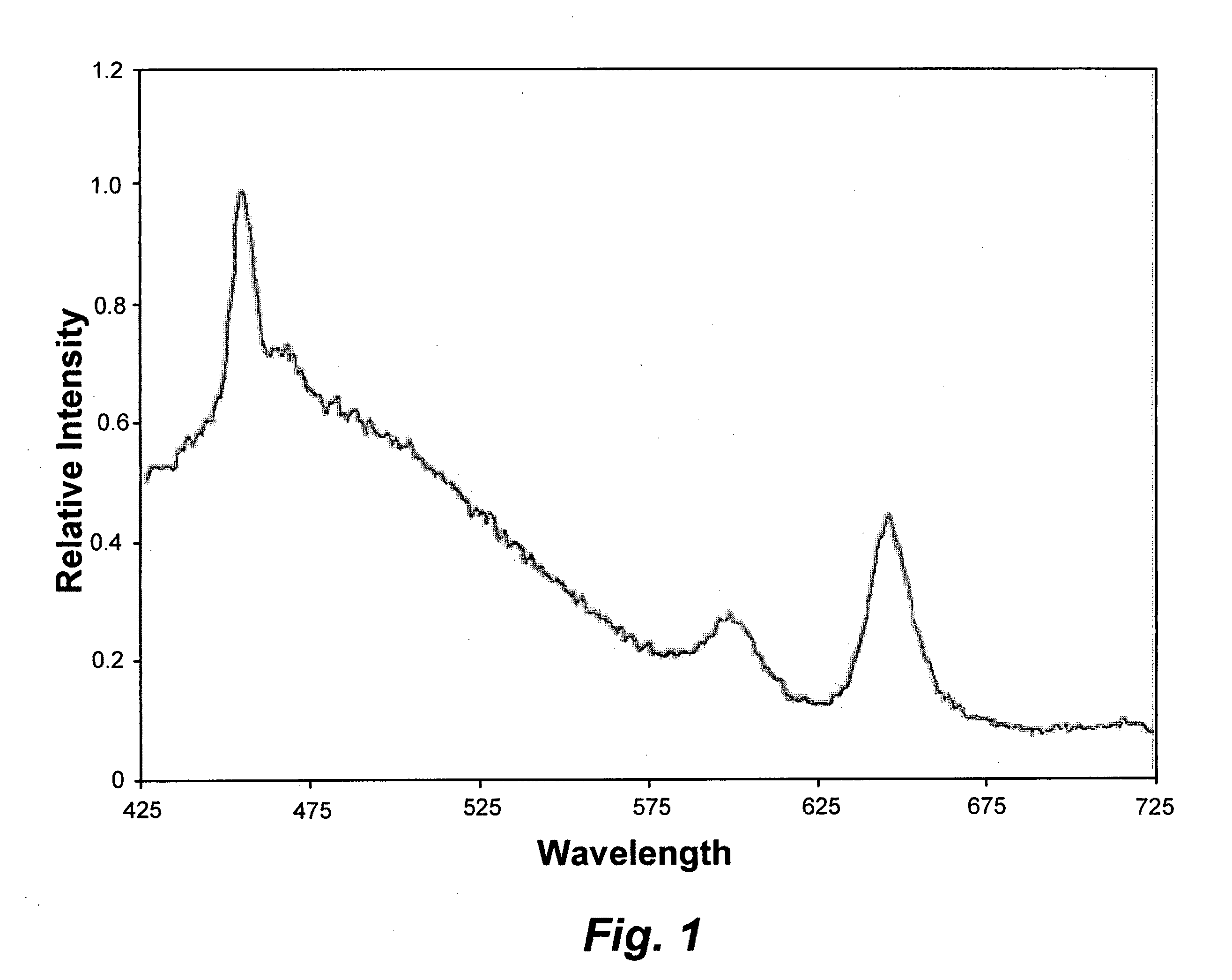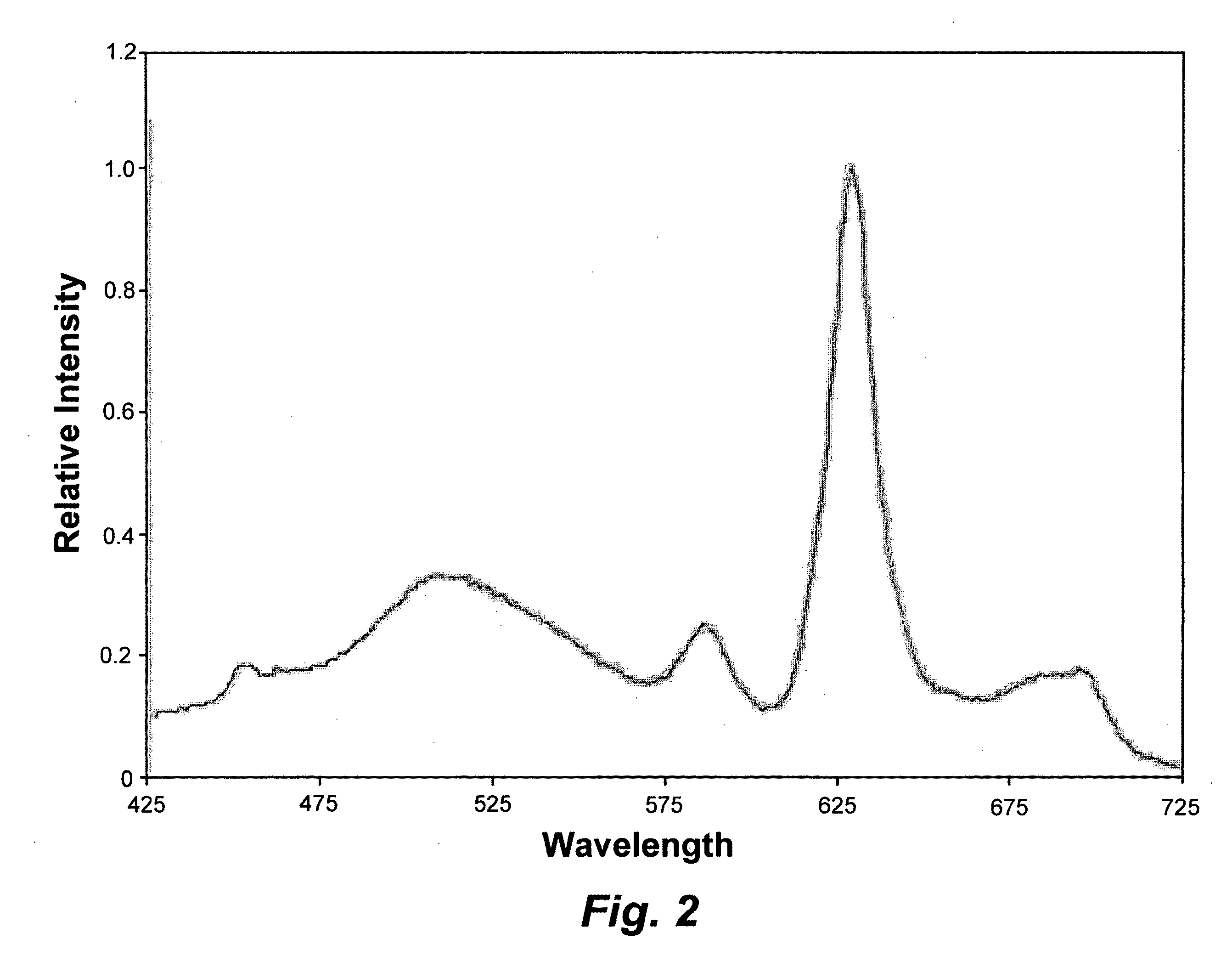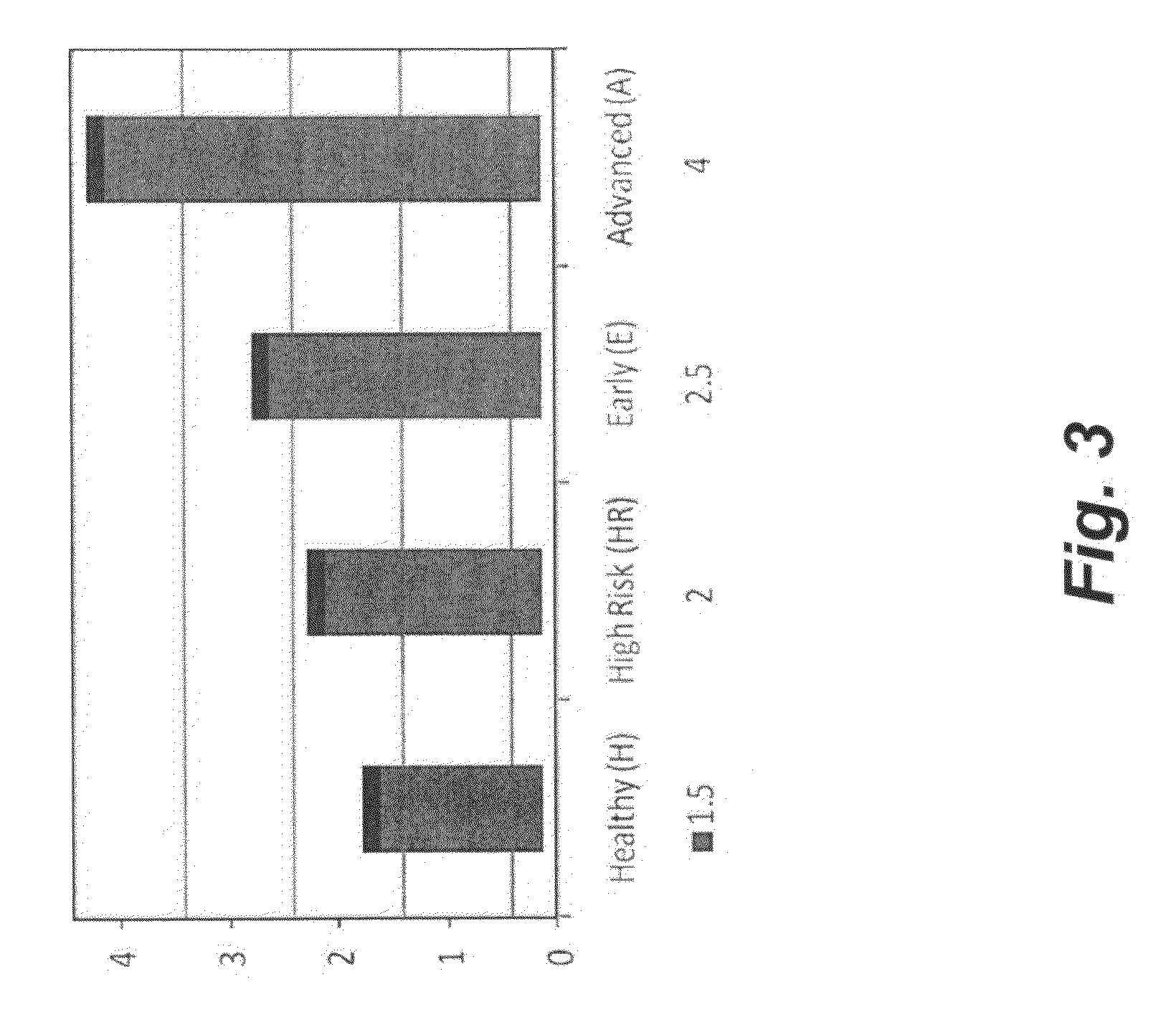Lung cancer detection by optical analysis of body fluids
- Summary
- Abstract
- Description
- Claims
- Application Information
AI Technical Summary
Benefits of technology
Problems solved by technology
Method used
Image
Examples
example 1
[0042]A disposable syringe is used to uptake 5 ml of venous blood from the subject. The blood is placed in a sterile vial containing ethylenediaminetetraacetic acid (EDTA) anticoagulant. The blood is centrifuged at 4000 rpm for 15 minutes, and the supernatant plasma is separated out and collected in a sterile vial. The formed elements containing mostly cells, such as erythrocytes, are treated with acetone in the ratio of 1:2 (i.e., to 1 ml of formed elements, 2 ml of acetone). The sample is vigorously shaken 100 times and then centrifuged at 4000 rpm for 15 minutes.
[0043]The supernatant thus obtained is a clear solution containing the bio-molecules that are tumor markers. It is subjected to the optical analysis as described before. The wavelength of excitation is fixed at 400 nm by adjusting the interference filter or grating, and the fluorescence emission spectrum is obtained in the range of 425 to 720 nm.
[0044]A typical result is shown in FIG. 1 for a sample from a healthy individ...
example 2
[0054]Urine samples are prepared for analysis as follows. The subject is required to give the first voided urine in a sterile vial after 48 hours of strict abstinence from non-essential medicines (including herbal and ayurvedic), spicy meals, and meats. 2 ml of urine is dropped in a quartz cuvette. The excitation wavelength is set at 400 nm, and the fluorescence spectrum from 425 to 700 nm is obtained. Exemplary spectra for a healthy individual and a lung cancer patient are shown in FIG. 4. Among the many bands, we ignore all except the 470, 520, 550, and 620 nm bands, which are consistent. A set of cancer-defining ratio parameters is given in Table II.
TABLE IIRatio Parameters R7 through R9PreAdvancedRatioMalignancyEarly Cancerstage LungParameterNormalof lungof lungCancerR6 = (I520 / I470)1.2-1.41.4-1.6>1.6R7 = (I620 / I470)0.3-0.50.5-0.8>0.8R8 = (I550 / I470)0.6-0.80.8-1.0>1.0
[0055]It will be noted that the FES peak shifts from 500 nm to 535 nm as the disease progress from pre-malignant ...
example 3
[0056]Fluorescence excitation spectra of the samples were obtained where the emission grating is fixed and the excitation grating is rotated to obtain the excitation spectra, which is similar to, but not identical to, the absorption spectra. With suitable modifications in the system, one can get Synchronous Spectra (SS). Here, the excitation grating and emission grating are set at a wavelength difference of 70 nm or 30 nm, as required for the specific analysis. That is, when one grating is at 200 nm, the other is set at 270 nm, with the offset wavelength difference being 70 nm. Then, both gratings are synchronously scanned. The fluorescence obtained with the excitation of 200 nm is collected from 270 nm onwards. Then the excitation grating moves to 210 and synchronously the emission grating moves to 280 and collects fluorescence; this kind of synchronous scanning can go on up to 600 nm.
[0057]This is a compounded spectrum of fluorescence emission and excitation bands of many molecule...
PUM
 Login to View More
Login to View More Abstract
Description
Claims
Application Information
 Login to View More
Login to View More - R&D
- Intellectual Property
- Life Sciences
- Materials
- Tech Scout
- Unparalleled Data Quality
- Higher Quality Content
- 60% Fewer Hallucinations
Browse by: Latest US Patents, China's latest patents, Technical Efficacy Thesaurus, Application Domain, Technology Topic, Popular Technical Reports.
© 2025 PatSnap. All rights reserved.Legal|Privacy policy|Modern Slavery Act Transparency Statement|Sitemap|About US| Contact US: help@patsnap.com



